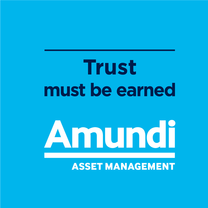Newsroom
Cross Asset - March 2019 - Investment Strategy
London, UK, March 5, 2019

Licence for value hunting
If an investor had woken up today after three months and looked at the markets, he/she could reasonably say that not much had changed. The year started on strong footing and risk assets experienced a massive rebound in the first weeks of 2019, erasing most of the losses experienced in one of the most awful Decembers in history. As a result some valuation gaps have been closed somewhat, though not exhausted. Markets switched rapidly from a “fear” to a “greed” mood. Catalysts of the renewed optimism have included the dovish shift in the Federal Reserve’s strategy, and increasing signs of progress in the trade negotiations between the US and China.
So, something has changed. A year ago, the narrative was about synchronised growth, inflation returning to the radar screen, and higher rates. In the second half of 2018, the scenario changed, however, featuring a synchronised slowdown and almost no signs of inflation risk. Going forward, we expect further divergences through the year: the US will continue to decelerate (from strong growth), EM could stabilise and rebound in H2, with differences among countries, and the Eurozone could follow, with stabilisation and rebound in H2, if significant risks don’t materialise. So, we are now in a sweet spot (slowdown but no recession, central banks on pause mode or accommodative stance, core bond yields stable at low levels) and as long as this continues (ie as long as growth does not falter too much or alternatively the Fed is back to focusing on inflation or growth concerns), this spot is market-friendly, though we are likely to see volatility as some areas of uncertainty (geopolitics) and vulnerability (high debt) persist.
The guiding principle for navigating this late phase of the cycle is the consistent search for sustainability from different perspectives. Focuses include the following: sustainability of growth –ie, countries/areas with solid domestic sectors. It is particularly important in EM countries to avoid situations of excessively unbalanced and vulnerable growth models, preferring areas that are experiencing a rise of internal demand (Asia in particular); sustainability of corporate earnings, focusing on companies with solid business models; and sustainability of debt, avoiding the most fragile situations, which could suffer the most in phases of scarce market liquidity.
We strongly believe that focusing on fundamentals will prevent investors from falling into the pessimism (and/ or excess of optimism) trap that a noisy news flow could trigger (trade disputes still in the radar screen and CBs communications). Following this sort of focus will also help in identifying market areas that could offer value for long-term investors. In January, we saw opportunities to increase risk exposure, starting with EM and credit (now partially exploited). We are now closely monitoring European equities which could now be an investor focus again. It is true that economic momentum remains weak, but further fiscal impulses could help stimulate domestic demand and a re-acceleration in EM growth could also benefit Europe. Earnings revisions reflect the pessimism associated with a slowdown, but we now see signs of deceleration in negative revisions, a signal that we are likely moving past the pessimism. Valuations are not discounted as they were at the beginning of the year, but they are not expensive either, with areas of opportunities in some cyclical sectors (i.e in industrials). Investors should not yet be in a hurry, but there could be reasons for deploying capital in European equities during the year, and we don’t believe there is cause to be short now on this asset class.
In conclusion, as we expect the market mood to continue to swing between fear and greed, we see some room for rotation to quality, reduction of directional market exposure or tactical recalibration of the risk budget. With a medium-term view, in a world of low yielding risk-free assets, the key guideline is to try to hunt for value opportunities arising from cyclical fluctuations.
Expert
Vincent has been Group Chief Investment Officer since February 2022. Previous to that, he was the Group Deputy CIO of Amundi since 2015. He is a member of the Globa[...]
Read moreDocuments
About Amundi
About Amundi
Amundi, the leading European asset manager, ranking among the top 10 global players[1], offers its 100 million clients - retail, institutional and corporate - a complete range of savings and investment solutions in active and passive management, in traditional or real assets. This offering is enhanced with IT tools and services to cover the entire savings value chain. A subsidiary of the Crédit Agricole group and listed on the stock exchange, Amundi currently manages more than €2.3 trillion of assets[2].
With its six international investment hubs[3], financial and extra-financial research capabilities and long-standing commitment to responsible investment, Amundi is a key player in the asset management landscape.
Amundi clients benefit from the expertise and advice of 5,600 employees in 35 countries.
Amundi, a trusted partner, working every day in the interest of its clients and society
Footnotes
- ^ [1] Source: IPE "Top 500 Asset Managers" published in June 2024 based on assets under management as of 31/12/2023
- ^ [2] Amundi data as at 31/03/2025
- ^ [3] Paris, London, Dublin, Milan, Tokyo and San Antonio (via our strategic partnership with Victory Capital)
Footnotes





